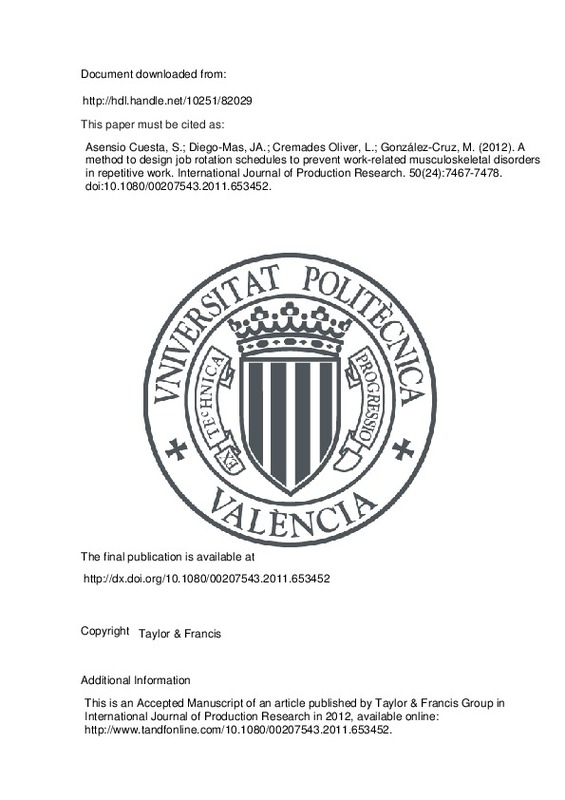JavaScript is disabled for your browser. Some features of this site may not work without it.
Buscar en RiuNet
Listar
Mi cuenta
Estadísticas
Ayuda RiuNet
Admin. UPV
A method to design job rotation schedules to prevent work-related musculoskeletal disorders in repetitive work
Mostrar el registro completo del ítem
Asensio Cuesta, S.; Diego-Mas, JA.; Cremades Oliver, L.; González-Cruz, M. (2012). A method to design job rotation schedules to prevent work-related musculoskeletal disorders in repetitive work. International Journal of Production Research. 50(24):7467-7478. https://doi.org/10.1080/00207543.2011.653452
Por favor, use este identificador para citar o enlazar este ítem: http://hdl.handle.net/10251/82029
Ficheros en el ítem
Metadatos del ítem
| Título: | A method to design job rotation schedules to prevent work-related musculoskeletal disorders in repetitive work | |
| Autor: | Cremades Oliver, L.V. González-Cruz, María-Carmen | |
| Entidad UPV: |
|
|
| Fecha difusión: |
|
|
| Resumen: |
Job rotation is an organisational strategy widely used in human-based production lines with the aim of preventing work-related musculoskeletal disorders (WMSDs). These work environments are characterised by the presence ...[+]
|
|
| Palabras clave: |
|
|
| Derechos de uso: | Reserva de todos los derechos | |
| Fuente: |
|
|
| DOI: |
|
|
| Editorial: |
|
|
| Versión del editor: | http://dx.doi.org/10.1080/00207543.2011.653452 | |
| Código del Proyecto: |
|
|
| Descripción: |
|
|
| Agradecimientos: |
|
|
| Tipo: |
|







![[Cerrado]](/themes/UPV/images/candado.png)


